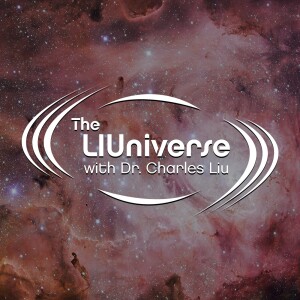
Saturday Feb 18, 2023
Black Holes, Galaxies, and The Expanse with Jimmy Negus
Welcome to the first ever episode of the LIUniverse, your happy half hour dose of cosmic conversation and geeky banter with host Dr. Charles Liu! In this episode, we talk quasars, “The Expanse”, and more with our guest Jimmy Negus, PhD candidate at the University of Colorado Boulder, and with our co-host Allen Liu. The trio discuss Jimmy’s research on active galactic nuclei (AGNs), including some that might not even be in a galaxy’s nucleus at all, plus some sci-fi stories that have them hooked, and some in which the science really misses the mark.
You’ll discover how something “only” the size of the orbit of Mercury could outshine an entire galaxy, learn how the highest note on the piano can help examine the atmosphere, and find out how a telescope survey with a tortured acronym is bringing a new dimension to astronomical research. You can also explore how Jimmy helps students understand the truly impressive size of our neighborhood in space – even in his new 10-billion-to-1 scale model.
We also answer questions from students and from our patrons, and we have some great ones to kick us off. Ben asks, what’s the difference between a black hole, an AGN and a quasar? Sadie asks, why choose astronomy over other fields of science? Plus, our patron Walter wonders, is there anything in the universe that doesn’t spin or vibrate?
We’re so glad to finally be able to share the LIUniverse podcast with all of you, and we hope you continue to geek out with us for many episodes to come! If you like the episode, please support The LIUniverse on Patreon.
Credits for Images Used in this Episode:
- B20258+35’s host galaxy, NGC 1167 – Credit: Sloan Digital Sky Survey
- Quasar (Artist’s rendering) – Credit: ESO/M. Kornmesser
- The Mice, a pair of merging galaxies – Credit: Hubble ACS
- The Sun from the Colorado scale model solar system – Credit: Jimmy Negus
- The Sloan telescope at Apache Point Observatory – Credit: Sloan Digital Sky Survey
- Fiber optics for integral field spectroscopy – Credit: Sloan Digital Sky Survey
- Dyson Sphere (Artist’s rendering) – Credit: Kevin Gill
- Laser guide star at the Very Large Telescope – Credit: G. Hüdepohl/ESO
No comments yet. Be the first to say something!